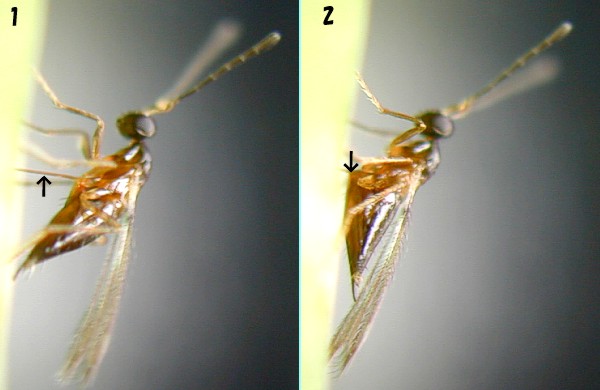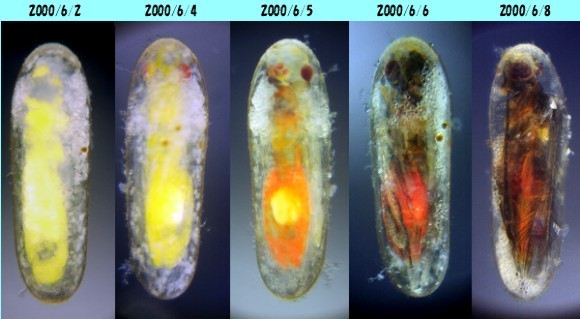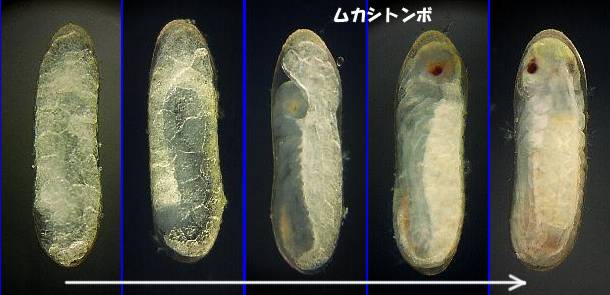
Egg-parasitoids wasp of Epiophlebia superstes
The final renewal day of this page is September 12, 2003.

Exuvia of Epiophlebiidae Epiophlebiidae Miscellany description of Epiophlebia superstes Egg of Epiophlebiidae Epiophlebia superstes 2
Figure4-1: 1. Oviposition of
Epiophlebia superstes Epiophlebia superstes is Epiophlebiidae. 2. Scars caused by the act of oviposition. (This
plant is Elatostema umbellatum.) 3. The inhabiting environment of
Epiophlebia superstes. Epiophlebia superstes inhabits the source
basin of the river.

An egg-parasitoids wasp is seen by the egg of Epiophlebia superstes, too. Size ♀:body length 0.85mm. A. male is a little bigger than a female. The length of the male antenna is longer than a female.
Figure4-2: The movement of
laying of the egg-parasitoids wasp A female walks about the surface
of the plant with investigating it in the antenna. A female sometimes stops.
Then, after an ovipositor is made vertical in the plant, an ovipositor is pushed
in the whole body, and it lays eggs. (An arrow in the figure shows an
ovipositor. )

Figure4-3: Epiophlebia superstes egg which an egg-parasitoids wasp parasitized Growth for 6 days The growth of the egg-parasitoids wasp is fast. An egg-parasitoids wasp is already a pupa when the egg which it doesn't parasitize turns over as to the embryo. An egg-parasitoids wasp emerged earlier than hatching of the egg of Epiophlebia superstes. Then, laying is begun soon after the emergence. But, there are larvae of the egg-parasitoids wasps which doesn't grow up in the eggs, too.
A photograph is a growth record for 6 days.

Figure4-4: The egg of Epiophlebia superstes A photograph is a growth record for 8 days.
